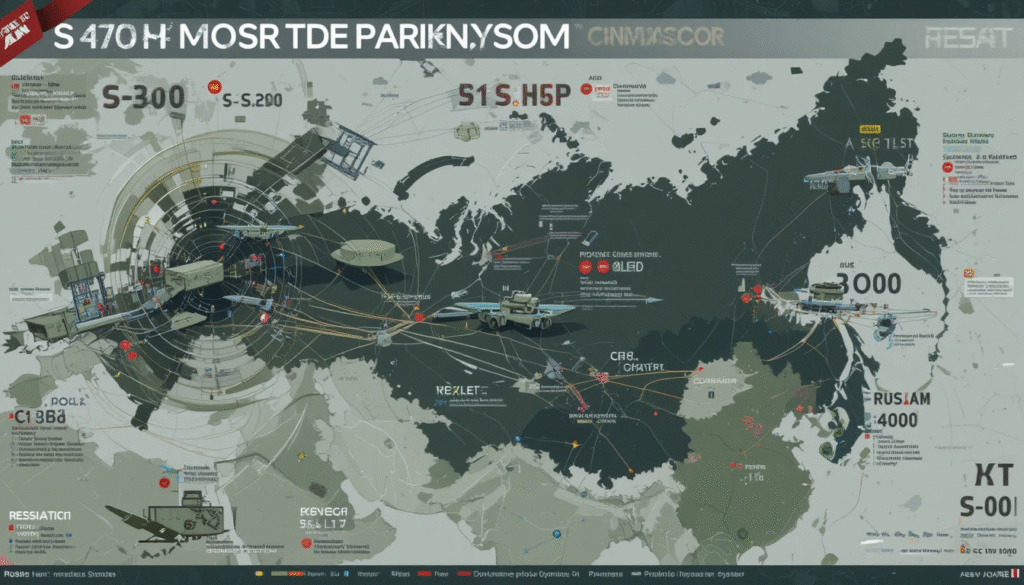
In the ever-evolving chess game of modern warfare, air superiority is only half the story. The other half? Denying your enemy that same luxury. Enter Russia’s formidable trio of surface-to-air missile (SAM) systems: the S-300, S-400, and the cutting-edge S-500 Prometey. Each system marks a significant leap in capability, designed not just to defend airspace—but to dominate it.
Let’s unpack what makes each of these systems tick, and why they’ve become central to Russia’s strategic air defense doctrine.
🔹 S-300: The Cold War Warrior That’s Still Going Strong
First deployed in 1979, the S-300 was the Soviet Union’s answer to Western cruise missiles and high-altitude bombers. Designed for long-range air defense, it could engage multiple targets—aircraft, cruise missiles, even some types of ballistic missiles—simultaneously.
Key Specs:
- Max Range: ~200 km (depending on variant)
- Speed: Mach 6+
- Targets: Aircraft, cruise missiles, short-range ballistic missiles
- Variants: S-300P (Air Force), S-300V (Army, anti-ballistic role)
Despite being over 40 years old, modernized S-300s are still active in over a dozen countries, from China and India to Syria and Greece. Why? Because it was built to last—and it did.
🔹 S-400 Triumf: The Global Game-Changer
Enter the S-400, the system that made NATO planners lose sleep. Deployed in 2007, the S-400 was more than an upgrade—it was a quantum leap in air defense capability. With its suite of long- and ultra-long-range missiles, the Triumf can take out stealth fighters, drones, cruise missiles, and ballistic targets hundreds of kilometers away.
Why It Stands Out:
- Max Range: Up to 400 km (with 40N6 missile)
- Speed: Up to Mach 14
- Multi-Target Tracking: Up to 80 targets at once
- Integrated Radar Network: Includes high-power phased-array and anti-stealth radar systems
The S-400 wasn’t just popular with Russia. Countries like China, India, and even Turkey (a NATO member) have bought it, despite U.S. pressure and sanctions.
🔹 S-500 Prometey: The Sky’s No Longer the Limit
Nicknamed “Prometheus,” the S-500 is Russia’s most advanced missile defense system to date—and it’s not just built to shoot down planes. It’s built to target ballistic missiles, hypersonic weapons, and even satellites.
Officially entering limited service in 2021, the S-500 is believed to be capable of intercepting targets in near space—a clear sign it’s part of Russia’s anti-space defense doctrine.
Cutting-Edge Features:
- Max Range: ~600 km (air targets), ~500 km (ballistic missiles)
- Target Types: Hypersonic glide vehicles, ICBMs, stealth aircraft, satellites
- Speed: Estimated Mach 15+
- Deployment: Strategic defense units; complements the S-400, doesn’t replace it
Though much of the S-500’s real-world performance remains classified, early reports suggest it’s a true multi-layered defense system, capable of forming the backbone of Russia’s missile shield well into the 2030s.
🔸 S-300 vs S-400 vs S-500: Side-by-Side
| Feature | S-300 | S-400 | S-500 |
|---|---|---|---|
| Year Deployed | 1979 | 2007 | 2021 (limited) |
| Max Range | ~200 km | Up to 400 km | Up to 600 km |
| Max Speed | Mach 6+ | Mach 14 | Mach 15+ |
| Target Types | Aircraft, Missiles | Aircraft, Missiles | Hypersonics, ICBMs, Space |
| Global Reach | Widely exported | Exported (China, India, Turkey) | Limited export (future) |
Global Operators of Russia’s S-300, S-400, and S-500 Systems: A Country-by-Country Breakdown
Summary Table
| Missile System | Countries Operating | Estimated Number of Units |
|---|---|---|
| S-300 | Russia, Ukraine, China, India, Iran, Belarus, Armenia, Kazakhstan, Syria, others | Over 1,000 units |
| S-400 | Russia, China, India, Turkey, Belarus, Algeria, others | Over 50 units |
| S-500 | Russia | 1 regiment (limited service) |
🧠 Final Thoughts: Evolution, Not Replacement
Each new Russian SAM system hasn’t replaced the last—it’s layered on top, creating a defense network capable of confronting a wide spectrum of modern threats, from stealth bombers to satellites. The S-300 handles broad area defense, the S-400 pushes the perimeter out further and deals with stealth threats, and the S-500 reaches into space itself.
It’s a clear reminder: air superiority isn’t just about what you fly—it’s about what you can shoot down.


